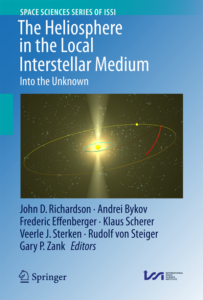ISSI’s Game Changers online seminar series was launched during the first Covid-19-related lockdown in summer 2020 to help keep the community together. Up until this 100th webinar, the series has covered a wide range of topics, from climate change on Earth to life in the universe and the Big Bang. Following an ISSI workshop on “The Geoscience of Exoplanets: Going Beyond Habitability” earlier this April, the speaker will discuss how the geosciences and the physics of the solid planet in particular, can support the search for life on exoplanets. The non-linear theory of plate-tectonics will be used to discuss the bi-stability of tectonics, climate, and the bio-productivity of Earth-like worlds. A central element to the discussion will be the role of water cycling between interior and surface reservoirs. Positive and negative feedback mechanisms will be explored along with the non-linear dependence of key rock properties on water concentration and temperature. It will be argued that the Earth, with its balanced distribution of land and ocean surface areas and its life-friendly conditions, might be rather rare. Other Earth-like worlds would more likely be “dune planets” covered mostly by land and whose biomass is water-supply limited. A less likely planet, but still more likely than Earth, would be mostly covered by ocean water and life would be nutrition-supply limited. Light curves of candidate exoplanets such as those tested for Earth with NASA’s EPOXI mission might help to statistically test the model. The title of this talk could then be reversed: How the study of exoplanets can contribute to solving conundrums for geoscientists.
Tilman Spohn is a researcher at the DLR Institute of Planetary Research in Berlin where he was Director from 2004 to 2017. From 2019 to 2022, he was the Executive Director of the International Space Science Institute (ISSI). He was Principal Investigator of the Heat Flow and Physical Properties Package HP3 on NASA’s InSight Mars mission and the MUPUS thermal probe on ESA’s Rosetta mission. From 2004–2017, he helped develop the BELA Laser Altimeter as Co-PI on the BepiColombo mission, which is now on its way to Mercury. In his theoretical studies, he modeled the thermal and tectonic evolution of Earth, the terrestrial planets and of small bodies of the Solar System. He is a Fellow of the American Geophysical Union and a member of the Academia Europaea and of the Academy of Astronautics.
Webinar was recorded on April 25, 2024

